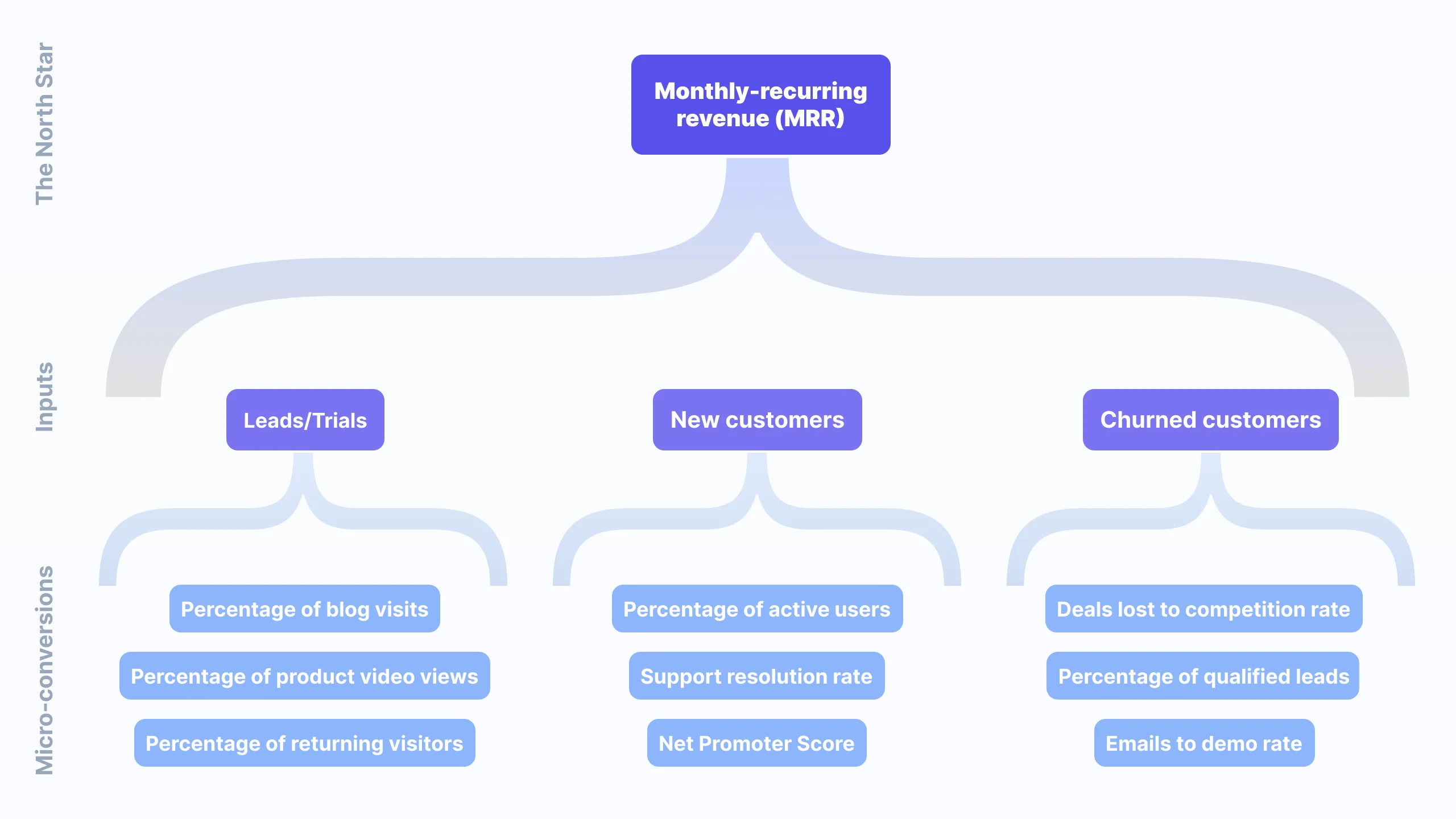What Is a North Star Metric & How to Use Micro-Conversions to Optimize It?


According to Sean Ellis, the north star metric (NSM) is a single, crucial metric that captures the core value your product delivers to customers. This metric is a leading indicator that defines the relationship between the customer and long-term business results.
Focusing on and optimizing company-wide efforts to improve your north star metric is key to driving long-term sustainable growth. It helps teams move beyond surface-level growth to instead focus on generating long-term retained customer growth.
The Inputs
The north star metric reflects the customer journey and measures when user journeys are successful. In the case of SaaS companies measuring purchases indicates that buyers have completed their journey, but the purchase event can be influenced by several measurable factors like website leads or even email open rates. These are as important as the metric and should be a small set (3-5) of influential, complementary factors that most directly affect the north star metric.
Inputs can vary by industry, business model, and a product’s unique characteristics. The key is to identify the core factors that contribute to the north star metric for your business.
Connecting the Dots
The north star metric and the Inputs should be connected to the different team tasks and efforts, for example, product, marketing, or sales should work together on the improvement of the north star metric and focus on the inputs they can leverage. For example, the product team could work on the onboarding process and the marketing team on the lead conversion. The combined efforts would impact the north star metric.
Using micro-conversions is an effective strategy to measure and optimize the Inputs. A micro-conversion is a small step on the path of a visitor towards your primary conversion goal, in this case, the Inputs. They usually occur more often than Inputs because they are closer to small steps in the customer journey and show that a visitor is on the right track and could become a paying customer. So, they’re more likely to happen and have an effect on optimization strategies like A/B Testing or personalization.
Using micro-conversions gives you a fuller picture of the performance and helps you identify areas to focus on for conversion rate optimization.
Example for a B2B SaaS
The following image is an example of the north star metric framework for a B2B Saas, with "monthly-recurring revenue (MRR)" as the north star metric. Leads/trials, new customers, and churned customers as inputs. And finally, micro-conversions like "percentage of blog visits" or "net promoter score".

Learn how to deliver unique and personalized customer experiences to increase conversions

